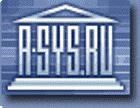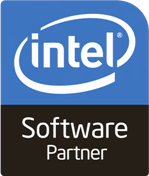Total Architecture: The Enterprise is the System
|
Dr. Paul C. Brown |
| Abstract
The architecture of information technology in the enterprise has undergone a largely unrecognized transformation over the past decade. With the use of enterprise application integration (EAI), service-oriented architecture (SOA), and business process management (BPM), enterprise applications are now comprehensively tied together to form a substantial part of a much larger enterprise-scale system - a system that executes the enterprise’s business processes. A significant feature of these business processes, and therefore of the enterprise-scale system, is that the participants include both people and information systems. Once information systems are integrated, the static architectural view of applications living on top of an infrastructure of machines and networks becomes inadequate to ensure proper support of the enterprise. We must consider the ability of the architecture to support interaction dynamics involving both people and systems. It follows that the static architectural view must address the structure and organization of the people as well as the information systems. This is the total architecture of the enterprise. The key to total architecture is business processes. It is through business processes that the enterprise provides its value. These processes define the roles and responsibilities of all participants (human and computer alike), the timing of their activities, and the movement of information. As business processes evolve, responsibilities shift between people and systems. The appropriateness of the total architecture lies in its ability to facilitate both the execution of current business processes and the evolution of those business processes in response to market pressures. Total architecture is not a choice: it is a concession to reality. This recognition has many implications for the enterprise. Since the total architecture encompasses business people as well as information systems, it cannot be solely an IT responsibility. The interdependencies run so deep that the architecture of organizations, business processes, and information systems must be developed concurrently, not sequentially. In this light, we must rethink the way we conduct projects. Our notions of enterprise architecture must evolve as well: the scope of enterprise architecture must encompass the enterprise’s organizations and business processes along with its information systems. Total Architecture illuminates the relationship between business processes, organizations, information, and systems. Keeping these relationships in focus enables the enterprise to efficiently implement today’s business processes and evolve them as business needs change. Ignoring these relationships leads to brittle implementations and expensive changes. The choice is yours. |
| Author’s appeal
|
 Paul C. Brown Bio Dr. Paul C. Brown is a principal software architect at TIBCO Software Inc. and the author of Succeeding With SOA: Realizing Business Value Through Total Architecture and Implementing SOA: Total Architecture In Practice. His model-based tool architectures are the foundation of a diverse family of applications that design distributed control systems, process control interfaces, internal combustion engines, and NASA satellite missions. Dr. Brown’s extensive design work on enterprise-scale information systems him to develop the total architecture concept: business processes and information systems are so intertwined that they must be architected together. Dr. Brown received his Ph.D. in Computer Science from Rensselaer Polytechnic Institute. |
| « Previous Keynote | All Keynotes | Next Keynote» |
| Invited Talks | Regular talks | Workshops | Types of presentations |
| All talks sorted by author name | All talks sorted by company name |




















